Discover The Deep-Sea Podcast
The Deep-Sea Podcast

135 Episodes
Reverse
Welcome to the PRESSURISED version of episode 64, just the science, none of the waffle
PRESSURISED: Cephstravanganza with Professor Kat Bolstad | The Deep-Sea Podcast | Episode 64
Episode Summary
In our newest episode, we join roving reporter Kat Bolstad at the Cephalopod International Advisory Council in Okinawa and hear from some of the most interesting people in Cephalopod research.
Check out our lovely new website where you can find more detailed notes, images and links to the wider reading.
In this episode…
Our episode this month is a fascinating collection of interviews from the Cephalopod International Advisory Council Meeting that took place Oct-Nov in Okinawa Japan. Join Kat Bolstad, our roving reporter, as she takes time between bug hunting, seeing her first wild cuttlefish and shaking hands with a new octopus friend to collect interviews with some of the coolest names in Ceph science with a focus on the deep-sea. We hear from 12 Cephalopod experts on a wide variety of topics, including the preferred snacks for cephalopods, the effects of oxygen depletion on egg hatching, water temperature and acidification effects on cephalopod populations, and of course, the correct answer to the viral question: are octopuses actually ALIENS?
Support the show
The podcast is self-sustaining (just) thanks to our lovely listeners. Thom and Alan take no money for the show. All money is put back into running it. Here’s a link to our page on how to support us, from the free options to becoming a patron of the show. We want to say a huge thank you to those patrons who have already pledged to support us:
Elisabeth Grace Diemer
Nes Morgan
Check out our podcast merch here!
Feel free to get in touch with us with questions or your own tales from the high seas on:
podcast@deepseapod.com
We’d love to actually play your voice, so feel free to record a short audio note on our brand new answerphone!
https://www.speakpipe.com/deepseapodvoicemail
Thanks again for tuning in; we’ll deep-see you next time!
Find out more
Social media
BlueSky: @deepseapod.com
https://bsky.app/profile/deepseapod.com
Twitter: @DeepSeaPod
https://twitter.com/DeepSeaPod
Instagram: @deepsea_podcast
https://www.instagram.com/deepsea_podcast/
Keep up with the team on social media
Twitter:
Alan - @Hadalbloke
Thom - @ThomLinley
Instagram:
Thom - @thom.linley
Inkfish - @inkfishexpeditions
BlueSky:
Thom @thomaslinley.com
Alan @hadalbloke
Reference list
Unseen Ocean Collective
Unseen Ocean Collective.
Unseen Ocean Collective (@unseenoceancollective) • Instagram photos and videos
https://bsky.app/profile/unseenocean.bsky.social
Interview Links
Kat’s Socials
Bluesky: @autsquidsquad.bsky.social
Sarah McAnulty
Skype a Scientist SkypeAScientist.com
Squidfacts.net
Kristina Fleetwood
Chumash Heritage National Marine Sanctuary
Décima lab website
Meg Mindlin
Invertibabe
Toni’s socials
Twitter,
ResearchGate
ORCID
Toni’s Research Group
Funcionamiento y Vulnerabilidad de Ecosistemas Marinos | Institut de Ciències del Mar
Other Links
Breathe | Mauri Ora | Te Papa
@Tailsfromthedeep
Global biodiversity of the genus Ommastrephes (Ommastrephidae: Cephalopoda): an allopatric cryptic species complex
Mitochondrial genome diversity and population structure of the giant squid Architeuthis
Spatial ecology of Norway lobster Nephrops norvegicus in Mediterranean deep-water environments: implications for designing no-take marine reserves (MEPS)
Diel and seasonal patterns of Nephrops norvegicus (Decapoda: Nephropidae) catchability in the western Mediterranean
Antarctic octos as records and predictors of climate-related changes in the Antarctic “Emerging evidence of abrupt changes in the Antarctic environment“
Danna Staaf books
Cephalopod camouflage bibliography on Zotero
AUT Lab for Cephalopod Ecology & Systematics aka AUT ‘Squid Squad’
Cephalopod Images and Footage
Keishu Asada Instagram
CIAC 2025 website, programme, book of abstracts
https://www.ryo-minemizu.com/
Keishu Asada Marine Videos
Keishu Asada Instagram
@PeterandtheOctopus
Credits
Song of the month: Tornado of Souls, by Megadeth, performed by medium-sized Jamieson.
Logo image: Photo credit to Peter Morse @PeterAndTheOctopus
Theme: Hadal Zone Express by Märvel
Episode Summary
In our newest episode, we join roving reporter Kat Bolstad at the Cephalopod International Advisory Council in Okinawa and hear from some of the most interesting people in Cephalopod research.
Check out our lovely new website where you can find more detailed notes, images and links to the wider reading.
In this episode…
Welcome back to the Deep-Sea Podcast, your punk take on all things deep sea!
The Professor is still down under, organizing conferences and recuperating from Old Mate’s Classic Aussie Sausage Sizzle, a robust event filled with friends of the podcast and still felt 24 hours later.
Thom is freshly back from another big ocean/small boat adventure, in which the ocean always wins and his stomach always loses… everything. He is also stretching his creative muscles and curating an exciting new museum exhibit called Breathe | Mauri Ora at Te Papa, an examination of science into art by Marshmallow Lazer Feast.
Our episode this month is a fascinating collection of interviews from the Cephalopod International Advisory Council Meeting that took place Oct-Nov in Okinawa Japan. Join Kat Bolstad, our roving reporter, as she takes time between bug hunting, seeing her first wild cuttlefish and shaking hands with a new octopus friend to collect interviews with some of the coolest names in Ceph science with a focus on the deep-sea. We hear from 12 Cephalopod experts on a wide variety of topics, including the preferred snacks for cephalopods, the effects of oxygen depletion on egg hatching, water temperature and acidification effects on cephalopod populations, and of course, the correct answer to the viral question: are octopuses actually ALIENS?
In the news, get ready for updates on:
Deep diving manta rays using the ocean bottom to navigate
A newly launched AI tool to map the Deep- Sea
Bright blue mud filled with fat molecules indicating life in the deep
Corals and Crinoids sharing symbionts and cycling nitrogen
And an update from the Unseen Ocean Collective about the work they are creating for a show in Juneau Alaska in 2026.
On the Discord, we’ve been busy with:
Voting on the Holiday Party movie
Started a long overdue ART channel, and a new Pets channel
Photo tours of submersibles and Okinawa
Early Holiday celebrations by one of our hosts
Great feedback and conversation on our last episode.
Support the show
The podcast is self-sustaining (just) thanks to our lovely listeners. Thom and Alan take no money for the show. All money is put back into running it. Here’s a link to our page on how to support us, from the free options to becoming a patron of the show. We want to say a huge thank you to those patrons who have already pledged to support us:
Elisabeth Grace Diemer
Nes Morgan
Check out our podcast merch here!
Feel free to get in touch with us with questions or your own tales from the high seas on:
podcast@deepseapod.com
We’d love to actually play your voice, so feel free to record a short audio note on our brand new answerphone!
https://www.speakpipe.com/deepseapodvoicemail
Thanks again for tuning in; we’ll deep-see you next time!
Find out more
Social media
BlueSky: @deepseapod.com
https://bsky.app/profile/deepseapod.com
Twitter: @DeepSeaPod
https://twitter.com/DeepSeaPod
Instagram: @deepsea_podcast
https://www.instagram.com/deepsea_podcast/
Keep up with the team on social media
Twitter:
Alan - @Hadalbloke
https://twitter.com/Hadalbloke
Thom - @ThomLinley
https://twitter.com/ThomLinley
Instagram:
Thom - @thom.linley
https://www.instagram.com/thom.linley/
Inkfish - @inkfishexpeditions
https://www.instagram.com/inkfishexpeditions/
BlueSky:
Thom @thomaslinley.com
https://bsky.app/profile/thomaslinley.com
Alan @hadalbloke
https://bsky.app/profile/hadalbloke.bsky.social
Reference list
News
Deep-Sea News
World's largest rays may be diving to extreme depths to build mental maps of vast oceans
China launches AI tool for deep-sea research
Fat Molecules in Deep-Sea Mud Volcanoes Reveal How Microbes Survive Extreme Conditions | Discover Magazine
Putative promiscuous symbionts in deep-sea corals and crinoids may contribute to nitrogen cycling | Microbiome
Unseen Ocean Collective
Unseen Ocean Collective.
Unseen Ocean Collective (@unseenoceancollective) • Instagram photos and videos
https://bsky.app/profile/unseenocean.bsky.social
Discord Updates
Holiday Party! Join Patreon here to get access to the Holiday party!
Interview Links
Kat’s Socials
Bluesky: @autsquidsquad.bsky.social
Sarah McAnulty
Skype a Scientist SkypeAScientist.com
Squidfacts.net
Kristina Fleetwood
Chumash Heritage National Marine Sanctuary
Décima lab website
Meg Mindlin
Invertibabe
Toni’s socials
Twitter,
ResearchGate
ORCID
Toni’s Research Group
Funcionamiento y Vulnerabilidad de Ecosistemas Marinos | Institut de Ciències del Mar
Other Links
Breathe | Mauri Ora | Te Papa
@Tailsfromthedeep
Global biodiversity of the genus Ommastrephes (Ommastrephidae: Cephalopoda): an allopatric cryptic species complex
Mitochondrial genome diversity and population structure of the giant squid Architeuthis
Spatial ecology of Norway lobster Nephrops norvegicus in Mediterranean deep-water environments: implications for designing no-take marine reserves (MEPS)
Diel and seasonal patterns of Nephrops norvegicus (Decapoda: Nephropidae) catchability in the western Mediterranean
Antarctic octos as records and predictors of climate-related changes in the Antarctic “Emerging evidence of abrupt changes in the Antarctic environment“
Danna Staaf books
Cephalopod camouflage bibliography on Zotero
AUT Lab for Cephalopod Ecology & Systematics aka AUT ‘Squid Squad’
Cephalopod Images and Footage
Keishu Asada Instagram
CIAC 2025 website, programme, book of abstracts
https://www.ryo-minemizu.com/
Keishu Asada Marine Videos
Keishu Asada Instagram
@PeterandtheOctopus
Credits
Song of the month: Tornado of Souls, by Megadeth, performed by medium-sized Jamieson.
Logo image: Photo credit to Peter Morse @PeterAndTheOctopus
Theme: Hadal Zone Express by Märvel
Welcome to the PRESSURISED version of episode 63, just the science, none of the waffle
PRESSURISED: Bioluminescent Symbiosis with Margaret McFall-Ngai | The Deep-Sea Podcast | Episode 63
Our guest this month is Dr. Margaret McFall-Ngai, an animal physiologist and biochemist who is a staff researcher at Carnegie Institution for Science’s Division of Biosphere Sciences and Engineering, with her lab stationed at the California Institute of Technology in Biology and Biological Engineering. Dr. McFal-Ngai talks us through her work on the stable beneficial relationship between the Hawaiian bobtail squid (Euprymna scolopes) and its partner, the luminous bacterium Vibrio fischeri. Although technically not a deep-sea species, this relationship and its details might help us understand how deep-sea life creates bioluminescence and the possible life cycle impacts for the creatures involved.
Glossary
Crypt - The chambers within the squid's light organ.
Support the show
The podcast is self-sustaining (just) thanks to our lovely listeners. Thom and Alan take no money for the show. All money is put back into running it. Here’s a link to our page on how to support us, from the free options to becoming a patron of the show. We want to say a huge thank you to those patrons who have already pledged to support us:
Sophie Bagshaw
Laura
Check out our podcast merch here!
Feel free to get in touch with us with questions or your own tales from the high seas on:
podcast@deepseapod.com
We’d love to actually play your voice, so feel free to record a short audio note on our brand new answerphone!
https://www.speakpipe.com/deepseapodvoicemail
Thanks again for tuning in; we’ll deep-see you next time!
Find out more
Social media
BlueSky: @deepseapod.com
Twitter: @DeepSeaPod
Instagram: @deepsea_podcast
Keep up with the team on social media
Twitter:
Alan - @Hadalbloke
Thom - @ThomLinley
Instagram:
Thom - @thom.linley
Inkfish - @inkfishexpeditions
BlueSky:
Thom @thomaslinley.com
Alan @hadalbloke
Reference list
Interview Links
A lasting symbiosis: how the Hawaiian bobtail squid finds and
keeps its bioluminescent bacterial partner
A lasting symbiosis: how Vibrio fischeri finds a squid partner
and persists within its natural host
Credits
Logo image: Dr. Margaret McFall-Ngai
Theme: Hadal Zone Express by Märvel
Episode Summary
In our newest episode, Bioluminescent Symbiosis, we speak with Dr. Margaret McFall-Ngai, an animal physiologist and biochemist about her work with the Hawaiian bobtail squid (Euprymna scolopes) and its partner, the luminous bacterium Vibrio fischeri. McFall-Ngai provides a great synopsis of how this stable beneficial relationship not only creates light, and supports the bobtail maturation, but can also help us understand what could be going on in the light organs of deep-sea animals.
Check out our lovely new website where you can find more detailed notes, images and links to the wider reading.
In this episode…
Welcome back to the Deep-Sea Podcast, your punk take on all things deep sea!
The Professor is jetsetting as always, back in Edinburgh after a stint getting all the equipment ready in the Canary Island and is now happily being confused with professional racecar drivers. He will be back in Perth shortly to celebrate the Deep-Sea center paper publishing streak and reconnect with his Capybara spirit animal.
Thom is being called out in New Zealand Parliament, for all the right reasons, and he spent some Deep-Sea conference time in China, avoiding typhoons and pondering science ideas.
We are also celebrating 300,000 podcast downloads of the podcast, and appreciate our fans immensely!
Our guest this month is Dr. Margaret McFall-Ngai, an animal physiologist and biochemist who is a staff researcher at Carnegie Institution for Science’s Division of Biosphere Sciences and Engineering, with her lab stationed at the California Institute of Technology in Biology and Biological Engineering. Dr. McFal-Ngai talks us through her work on the stable beneficial relationship between the Hawaiian bobtail squid (Euprymna scolopes) and its partner, the luminous bacterium Vibrio fischeri. Although technically not a deep-sea species, this relationship and its details might help us understand how deep-sea life creates bioluminescence and the possible life cycle impacts for the creatures involved.
In the news, get ready for updates on:
Plenty of Science and Art collaboration news including a new collective, social media feeds and an opportunity for scientists to connect with artists.
Toxic Yellow worms, bright pink snailfish, and chewbacca corals.
An immensely important treaty ratification with worldwide impact.
Headteeth, yes you read that right.
‘
On the Discord, we’ve been busy with:
Bobtail squid fostercare
New Boardgame recommendations
Needle felting
New community papers and a Juicy Booty Starfish
Support the show
The podcast is self-sustaining (just) thanks to our lovely listeners. Thom and Alan take no money for the show. All money is put back into running it. Here’s a link to our page on how to support us, from the free options to becoming a patron of the show. We want to say a huge thank you to those patrons who have already pledged to support us:
Sophie Bagshaw
Laura
Check out our podcast merch here!
Feel free to get in touch with us with questions or your own tales from the high seas on:
podcast@deepseapod.com
We’d love to actually play your voice, so feel free to record a short audio note on our brand new answerphone!
https://www.speakpipe.com/deepseapodvoicemail
Thanks again for tuning in; we’ll deep-see you next time!
Find out more
Social media
BlueSky: @deepseapod.com
Twitter: @DeepSeaPod
Instagram: @deepsea_podcast
Keep up with the team on social media
Twitter:
Alan - @Hadalbloke
Thom - @ThomLinley
Instagram:
Thom - @thom.linley
Inkfish - @inkfishexpeditions
BlueSky:
Thom @thomaslinley.com
Alan @hadalbloke
Reference list
News
Links from Friends of the Show:
Skype a Scientist
Products | Support Skype a Scientist with the Squid Facts shop!
Deep Sea Biology Society ArtSea Matchmaking Project
Unseen Ocean Collective.
Unseen Ocean Collective (@unseenoceancollective) • Instagram photos and videos
https://bsky.app/profile/unseenocean.bsky.social
Swedish Biodiversity Symposium, 21 - 23 October 2025
Deep Sea Art + Science Feed on Blue Sky
News
Deep-Sea Worm Produces Orpiment, a Toxic Yellow Pigment Used in Historical Art | Scientific American
Mānoa: Chewbacca coral: New deep-sea species spotted in waters off Hawai‘i, Mariana Trench | University of Hawaii News
Nations ratify the world's first treaty to protect international waters
Ghost sharks grow teeth on their heads to mate | ScienceDaily
Descriptions of Three Newly Discovered Abyssal Snailfishes (Liparidae) from the Eastern Pacific Ocean
Discord Updates
Applying Deep Learning to Quantify Drivers of Long-Term Ecological Change in a Swedish Marine Protected Area
Diatoms | Board Game | BoardGameGeek
Juicy Booty Starfish
Join our Patreon to get access to the Discord
Interview Links
A lasting symbiosis: how the Hawaiian bobtail squid finds and
keeps its bioluminescent bacterial partner
A lasting symbiosis: how Vibrio fischeri finds a squid partner
and persists within its natural host
Credits
Logo image: Dr. Margaret McFall-Ngai
Theme: Hadal Zone Express by Märvel
Here’s our fourth episode of The Deco-Stop; a deeper look into the humans behind deep-sea science and technology. We’ve done our science dive, and now it’s time to decompress, and discuss tales at sea, career paths and the social & political aspects of deep-sea science. We have gazed into the abyss, and now it's gazing back at us.
Alan and Thom speak with Yakup Niyazi, a marine geoscientist who first saw the ocean at the age of 27. This fourth instalment in the Deco-Stop series, which focuses on the human element of deep-sea research, is an inspiring episode about one man’s journey from the desert to the bottom of the ocean, his challenges, achievements, and the deep community support he received along the way.
Check out our lovely new website, where you can find more detailed notes, images and links to the wider reading.
In this episode…
Welcome back to the Deep-Sea Podcast, this month we have a heartwarming Deco Stop episode and are again exploring …‘the human element in deep sea stories..’ - Alan
In our fourth instalment of the Deco-Stop series, Alan and Thom speak with Yakup Niyazi about his journey from the edge of the Asian Desert to the bottom of the ocean. An ethnic Uyghur who grew up in the city of Aksu, at the edge of the Taklamakan Desert in Central Asia, Yakup grew up not only physically but also emotionally and culturally removed from the sea. Yakup's early experiences pose some interesting questions: What is it like to grow up in a culture that doesn’t really have a concept of the ocean, and few descriptive words for the ocean? How do you interact with the ocean if your only experiences are from movies and television?
His incredible story is filled with overcoming adversity, fulfilled dreams, landscapes (and seascapes) that come full circle, and a deeper appreciation of the ocean than most people will ever experience. Despite humble beginnings, Yakup has an impressive roster of achievements and a social circle of supportive connections who only want to see him succeed further.
This inspiring episode reminds us that, regardless of our original circumstances, the world is a vast place filled with incredible opportunities. One day, you might find yourself exiting a hadal submarine, surrounded by the heartwarming cheers of friends and colleagues, having successfully visited the bottom of the ocean you only saw for the first time at age 27.
“I was a camel before, from the desert, but now I am a shark swimming in the ocean”- Yakup Niyazi
Support the show
The podcast is self-sustaining (just) thanks to our lovely listeners. Thom and Alan take no money for the show. All money is put back into running it. Here’s a link to our page on how to support us, from the free options to becoming a patron of the show. We want to say a huge thank you to those patrons who have already pledged to support us.
Check out our podcast merch here!
Feel free to get in touch with us with questions or your own tales from the high seas on:
podcast@deepseapod.com
We’d love to actually play your voice, so feel free to record a short audio note on our brand new answerphone!
https://www.speakpipe.com/deepseapodvoicemail
Thanks again for tuning in; we’ll deep-see you next time!
Find out more
Social media
BlueSky: @deepseapod.com
Twitter: @DeepSeaPod
Instagram: @deepsea_podcast
Keep up with the team on social media
Twitter:
Alan - @Hadalbloke
Thom - @ThomLinley
Instagram:
Thom - @thom.linley
Inkfish - @inkfishexpeditions
BlueSky:
Thom @thomaslinley.com
Credits
Logo image: Georgia Wells
Theme: Going Home by Harvey Jones
Welcome to the PRESSURISED version of episode 62, just the science, none of the waffle
PRESSURISED: Mythbusting Ai with Tyler Greenfield | The Deep-Sea Podcast | Episode 62
Check out our lovely new website where you can find more detailed notes, images and links to the wider reading.
In a follow-up to one of our favourite episodes, Ep 10 Here be Monsters, we bring Tyler Greenfield back for another fascinating chat, this time about Mythbusting in the age of Artificial Intelligence. Our feeds have been filled with images of mermaids, bizarre creatures supposedly from the depths and even strange barnacle washing videos, so we ask Tyler to bring his expertise to weigh in on the prevalence and problems with AI images.
Guest Interview
Tyler Greenfield is a paleontologist and cryptozoologist whose blog, Incertae Sedis reveals the truth behind some cryptozoological stories and paleontological mistakes. Since his appearance on episode 10, Tyler has finished his bachelor’s, written a good few papers, appeared on other podcasts (none as good as his debut of course) and is almost done with his masters and is about to start his PhD. He was even a credited consultant on the new (2025) Walking with Dinosaurs.
Support the show
The podcast is self-sustaining (just) thanks to our lovely listeners. Thom and Alan take no money for the show. All money is put back into running it. Here’s a link to our page on how to support us, from the free options to becoming a patron of the show. We want to say a huge thank you to those patrons who have already pledged to support us:
Hugo Shiboski
Check out our podcast merch here!
Join our Patreon to get access to the Discord
https://www.patreon.com/c/deepseapodcast
Feel free to get in touch with us with questions or your own tales from the high seas on:
podcast@deepseapod.com
We’d love to actually play your voice, so feel free to record a short audio note on our brand new answerphone!
https://www.speakpipe.com/deepseapodvoicemail
Thanks again for tuning in; we’ll deep-see you next time!
Find out more
Social media
BlueSky: @deepseapod.com
Twitter: @DeepSeaPod
Instagram: @deepsea_podcast
Keep up with the team on social media
Twitter:
Alan - @Hadalbloke
Thom - @ThomLinley
Instagram:
Thom - @thom.linley
Inkfish - @inkfishexpeditions
BlueSky:
Thom @thomaslinley.com
Reference list
The original article for our unfortunate ‘squid’ image
“Colossal Squid Filmed Alive for the First Time”: Juvenile Deep-Sea Monster Captured on Camera in South Atlantic Stuns Scientists - Sustainability Times
How A Golden Nurse Shark Made History
Interview
Tyler’s master’s/doctorate research
https://usercontent.one/wp/pecescriollos.de/wp-content/uploads/2022/06/PI-04-Greenfield-2022-List-of-skeletal-material-from-megatooth-sharks.pdf
https://usercontent.one/wp/pecescriollos.de/wp-content/uploads/2022/11/PI-06-Shimada-Greenfield-2022-Responses-to-Skeletal-material-from-megatooth-sharks.pdf
AI coelacanth hoax
Credits
Logo image: AI image originally used by Sustainability Times- AI images are not made by humans and cannot be copyrighted. (Sorry, not sorry)
Theme: Hadal Zone Express by Märvel
Check out our lovely new website where you can find more detailed notes, images and links to the wider reading.
In this episode…
Welcome back to the Deep-Sea Podcast, your punk take on all things deep sea! Join Alan in the Industrial Badlands of the Canary Islands as he cuts holes in ships, while Thom rubs elbows with New Zealand’s political elite.
In the news, get ready for updates on:
A meeting in Perth to discuss the Red List status of Deep-sea organisms.
Deep-sea desalination techniques
Capturing Octopus movements for robot creation
Common Starfish with a juicy booty and one country’s massive love for divestreaming
How deep-diving beaked whales might be our closest helpful relatives
On the Discord, we’ve been busy with:
A new patron, welcome Hugoshibo!
Custom-milled keels for a bespoke handmade USV.
Critter photos from a ghost diving trip.
Debated the necessity of jars in legitimising a science career.
Baby Dumbo paper and adorable baby photos shared by Kat.
Deep Sea Lino cut prints happening on canvas.
Ceramic hagfish sculptures and blown glass mermaids purses complete with kelp.
NotOurDog made an appearance, and much talk about Oreo cafes and CAKE!
Guest Interview
Tyler Greenfield is a paleontologist and cryptozoologist whose blog, Incertae Sedis reveals the truth behind some cryptozoological stories and paleontological mistakes. Since his appearance on episode 10, Tyler has finished his bachelor’s, written a good few papers, appeared on other podcasts (none as good as his debut of course) and is almost done with his masters and is about to start his PhD. He was even a credited consultant on the new (2025) Walking with Dinosaurs.
Support the show
The podcast is self-sustaining (just) thanks to our lovely listeners. Thom and Alan take no money for the show. All money is put back into running it. Here’s a link to our page on how to support us, from the free options to becoming a patron of the show. We want to say a huge thank you to those patrons who have already pledged to support us:
Hugo Shiboski
Check out our podcast merch here!
Feel free to get in touch with us with questions or your own tales from the high seas on:
podcast@deepseapod.com
We’d love to actually play your voice, so feel free to record a short audio note on our brand new answerphone!
https://www.speakpipe.com/deepseapodvoicemail
Thanks again for tuning in; we’ll deep-see you next time!
Find out more
Social media
BlueSky: @deepseapod.com
Twitter: @DeepSeaPod
Instagram: @deepsea_podcast
Keep up with the team on social media
Twitter:
Alan - @Hadalbloke
Thom - @ThomLinley
Instagram:
Thom - @thom.linley
Inkfish - @inkfishexpeditions
BlueSky:
Thom @thomaslinley.com
Reference list
Discord Updates
Join our Patreon to get access to the Discord
https://www.patreon.com/c/deepseapodcast
News
Te Papa Biodiversity Centre Press Release
Deep-Sea Desalination Pulls Fresh Water from the Depths | Scientific American
Deep-sea octopus footage could revolutionize flexible robot design - Earth.com
Humans descend into huge deep-sea canyon for first time ever. What they find is astounding | Discover Wildlife
Flourishing chemosynthetic life at the greatest depths of hadal trenches | Nature
The deepest-diving whales could inspire new treatments for stroke and cancer | National Geographic
Neurodegenerative Diseases: What Can Be Learned from Toothed Whales? - PMC
The original article for our unfortunate ‘squid’ image
“Colossal Squid Filmed Alive for the First Time”: Juvenile Deep-Sea Monster Captured on Camera in South Atlantic Stuns Scientists - Sustainability Times
How A Golden Nurse Shark Made History
Interview
Tyler’s master’s/doctorate research
https://usercontent.one/wp/pecescriollos.de/wp-content/uploads/2022/06/PI-04-Greenfield-2022-List-of-skeletal-material-from-megatooth-sharks.pdf
https://usercontent.one/wp/pecescriollos.de/wp-content/uploads/2022/11/PI-06-Shimada-Greenfield-2022-Responses-to-Skeletal-material-from-megatooth-sharks.pdf
Tyler’s work on Onchopristis and other sawskates
Blogposts:
https://incertaesedisblog.wordpress.com/2020/05/18/onchopristis-is-a-sawskate-not-a-sawfish/
https://incertaesedisblog.wordpress.com/2022/01/12/updates-on-sawskates/
https://incertaesedisblog.wordpress.com/2022/04/12/fact-checking-planet-dinosaurs-onchopristis/
https://incertaesedisblog.wordpress.com/2022/11/25/the-earliest-discovery-of-a-sawskate/
Other papers by Tyler:
https://www.mapress.com/bn/article/view/bionomina.22.1.3
https://www.researchgate.net/publication/356911837_Sawskates_Rajiformes_Sclerorhynchoidei_and_the_concept_of_pristification
https://www.researchgate.net/publication/357752727_Sawskates_Rajiformes_Sclerorhynchoidei_and_the_concept_of_pristification
https://mapress.com/mz/article/view/mesozoic.1.2.3
https://www.sciencedirect.com/science/article/abs/pii/S1464343X25000081
Some of Tyler’s work on megalodon in cryptozoology
https://www.journalofscientificexploration.org/index.php/jse/article/view/3041
https://zenodo.org/records/7903372
https://zenodo.org/records/13285787
https://www.youtube.com/watch?v=_2CZMfyHQAM&t=528s
https://www.researchgate.net/publication/385383987_The_history_of_Otodus_megalodon_in_cryptozoology
Further Reading
Onchopristis paper by Eduardo Villalobos-Segura et al
The BBC posted a clip of Spinosaurus hunting Onchopristis from "Walking with Dinosaurs" on YouTube, which anyone should be able to watch. The entire episode should be available for free on the BBC website for anyone in the UK and on the PBS website for anyone in the USA.
https://www.youtube.com/watch?v=BBPlZNfemmM
https://www.bbc.co.uk/iplayer/episode/m002csns/walking-with-dinosaurs-series-1-2-the-river-dragon
https://www.pbs.org/video/the-river-dragon-siyrjh/
AI coelacanth hoax
https://sharonahill.com/fake-california-coelacanth/
Three-fingered alien mummies
Paleontologist Rodolfo Salas-Gismondi’s skeptical analysis of the mummies.
Former paleontologist Clifford Miles’ website and ‘paper.’
https://web.archive.org/web/20231216230358/https://www.themilespaper.com/
https://web.archive.org/web/20231223232419/https://www.themilespaper.com/_files/ugd/5a322e_bf4471a1eba54eae9290f61265f6e25c.pdf
YouTuber History with Kayleigh made a skeptical video about Miles’ work, which would be more savory to link.
Nazca Mummies Are A New ALIEN Species?!
Credits
Song of the month: This might be it by Hyphen
Logo image: AI image originally used by Sustainability Times- AI images are not made by humans and cannot be copyrighted.
Phone answering machine from Sound Effects Factory
Theme: Hadal Zone Express by Märvel
Welcome to the PRESSURISED version of episode 61, just the science, none of the waffle
PRESSURISED: Trench nutrient cycling with Ronnie N. Glud | The Deep Sea Podcast | Episode 61
Guest Interview: Nutrient cycling in the hadal trenches (6 to 11 km) and the crucial role they play in global element cycling. Professor Ronnie N. Glud, a leading biochemist and Director of the Danish Centre for Hadal Research (HADAL) talks us through how the trenches, once thought to be barren, are actually "dynamic deep-sea hotspots with intensified microbial activity and diversity". Learn about:
How hadal trenches act as "depocenters" for organic material, leading to microbial activity that's 2 to 6 times higher than in adjacent abyssal sites.
The surprising diversity of microbial "generalists" that easily adapt to the immense pressure and low temperatures, aided by viruses that facilitate "horizontal gene transfer".
The return of full anaerobic diagenetic processes (like sulphate reduction and anammox) in trench sediments, making them significant sinks for fixed nitrogen.
The role of marine snow and seismic activity in efficiently transporting organic matter and, surprisingly, pollutants like PCBs and heavy metals to these remote depths.
Why these trenches are not isolated environments but are highly connected to surface ocean processes, even responding to climate-driven changes in primary production.
We also have a surprise blobfish guest!
Support the show
The podcast is self-sustaining (just) thanks to our lovely listeners. Thom and Alan take no money for the show. All money is put back into running it. Here’s a link to our page on how to support us, from the free options to becoming a patron of the show. We want to say a huge thank you to those patrons who have already pledged to support us:
C Wright
Check out our podcast merch here!
Feel free to get in touch with us with questions or your own tales from the high seas on:
podcast@deepseapod.com
We’d love to actually play your voice, so feel free to record a short audio note on our brand new answerphone!
https://www.speakpipe.com/deepseapodvoicemail
Thanks again for tuning in; we’ll deep-see you next time!
Find out more
Social media
BlueSky: @deepseapod.com
Twitter: @DeepSeaPod
Instagram: @deepsea_podcast
Keep up with the team on social media
Twitter:
Alan - @Hadalbloke
Thom - @ThomLinley
Instagram:
Thom - @thom.linley
Inkfish - @inkfishexpeditions
BlueSky:
Thom @thomaslinley.com
Reference list
Flourishing chemosynthetic life at the greatest depths of hadal trenches
Element cycling and microbial life in the hadal realm
Credits
Theme: Hadal Zone Express by Märvel
Logo image: Ronnie N. Glud
In this episode…
Welcome back to the Deep-Sea Podcast, your punk take on all things deep sea! Join Dr. Thom Linley and Professor Alan Jamieson as they dive into the latest from the abyssal plain and beyond.
Deep Sea News Highlights: We kick things off with a rethinking of the deep-sea boundary! Professor Alan Jamieson discusses his recent "food for thought" paper that challenges the long-held 200-meter definition, arguing for a more scientifically relevant boundary of 1,000 meters. Find out why this seemingly arbitrary line might be doing "a lot of damage" to our understanding and attitude towards the deep sea.
Also in the news, get ready for updates on:
A new story map on mesophotic reefs following the Deepwater Horizon spill in the Gulf of Mexico.
An exciting project charting shipwrecks in the Great Lakes using cutting-edge ROV technology for 3D modelling.
The discovery of a deep-sea limpet named after a One Piece character, found at an astonishing 6 kilometres deep!
How Earth's deep-sea microbes are being used to model potential life on Jupiter's moon Europa.
Groundbreaking research on a new bioplastic that vanishes by over 80% in extreme deep-sea conditions, offering hope for sustainable solutions.
Guest Interview: Nutrient cycling in the hadal trenches (6 to 11 km) and the crucial role they play in global element cycling. Professor Ronnie N. Glud, a leading biochemist and Director of the Danish Centre for Hadal Research (HADAL), talks us through how the trenches, once thought to be barren, are actually "dynamic deep-sea hotspots with intensified microbial activity and diversity". Learn about:
How hadal trenches act as "depocenters" for organic material, leading to microbial activity that's 2 to 6 times higher than in adjacent abyssal sites.
The surprising diversity of microbial "generalists" that easily adapt to the immense pressure and low temperatures, aided by viruses that facilitate "horizontal gene transfer".
The return of full anaerobic diagenetic processes (like sulphate reduction and anammox) in trench sediments, making them significant sinks for fixed nitrogen.
The role of marine snow and seismic activity in efficiently transporting organic matter and, surprisingly, pollutants like PCBs and heavy metals to these remote depths.
Why these trenches are not isolated environments but are highly connected to surface ocean processes, even responding to climate-driven changes in primary production.
We also have a surprise blobfish guest!
Support the show
The podcast is self-sustaining (just) thanks to our lovely listeners. Thom and Alan take no money for the show. All money is put back into running it. Here’s a link to our page on how to support us, from the free options to becoming a patron of the show. We want to say a huge thank you to those patrons who have already pledged to support us:
C Wright
Check out our podcast merch here!
Feel free to get in touch with us with questions or your own tales from the high seas on:
podcast@deepseapod.com
We’d love to actually play your voice, so feel free to record a short audio note on our brand new answerphone!
Thanks again for tuning in; we’ll deep-see you next time!
Find out more
Social media
BlueSky: @deepseapod.com
Twitter: @DeepSeaPod
Instagram: @deepsea_podcast
Keep up with the team on social media
Twitter:
Alan - @Hadalbloke
Thom - @ThomLinley
Instagram:
Thom - @thom.linley
Inkfish - @inkfishexpeditions
BlueSky:
Thom @thomaslinley.com
Reference list
The graves of Edinburgh
John Young Buchanan - Chemist on the Challenger Expedition
Edward Forbes - Deep-sea naturalist
Sir John Murray - Father of modern oceanography
Notable people buried in Dean Cemetery
Discord Updates
Join our Patreon to get access to the Discord
The supergiant amphipod wiki page
News
Interview
Flourishing chemosynthetic life at the greatest depths of hadal trenches
Element cycling and microbial life in the hadal realm
News/Further Reading
Reconsidering the term ‘deep sea’ | ICES Journal of Marine Science | Oxford Academic
Mesophotic and Deep Benthic Communities Expeditions
Historic Shipwrecks Come to Light in the Great Lakes - The New York Times
Lake Ontario National Marine Sanctuary -- Live!
Deep-sea Limpet named after OnePiece character
Microbial Life on Earth: A Model for the Cosmos
Reef Chat from Moku Art Studio with Paola Santiago Padua and Meghan Jones
Scientists find bioplastic that vanishes 80% even in extreme deep-sea conditions
Unveiling deep-sea biodegradation of microbially produced lactate-based polyester (LAHB) via plastisphere metagenomics and metatranscriptomics - ScienceDirect
Alan appeared on another podcast too:
We've Only Explored 0.001% of the Deep Sea - What's Lurking Below? | Discover Magazine Podcast
Credits
Theme: Hadal Zone Express by Märvel
Logo image: Ronnie N. Glud
Welcome to the PRESSURISED version of episode 60, just the science, none of the waffle
PRESSURISED: Mesophotic Reefs with Yi-Kai Tea | The Deep Sea Podcast | Episode 60
In this month's episode, we discuss mesophotic reefs, the deeper extents of coral reefs that have been overlooked in the past. It’s a wild ride that leads us to homemade hyperbaric chambers, the aquarium trade and the world’s most expensive fish. Strap in for a rollercoaster ride as we dive to the limits of scuba.
Find out more
at deepseapod.com
Social media
BlueSky: @deepseapod.com
Twitter: @DeepSeaPod
Instagram: @deepsea_podcast
Keep up with the team on social media
Twitter:
Alan - @Hadalbloke
Thom - @ThomLinley
Instagram:
Thom - @thom.linley
Inkfish - @inkfishexpeditions
BlueSky:
Thom @thomaslinley.com
Reference list
Kai’s website
Instagram
Bluesky
Twitter
Mesophotic fish collecting video
Taken by Ghislain Bardout from Under The Pole. The diver is Timothy Bennett, and he was collecting for the Australian Museum Research Expedition.
One of Kai’s recent mesophotic reef papers
The hyperbaric chamber for fishes
The paper where the chamber is described
The peppermint Angelfish
Kai’s video of the peppermint angel
Teresa’s project
Her recent paper on black corals
Support the show
The podcast is only possible with your help. Here’s a link to our page on how to support us, from the free options to becoming a patron of the show. We want to say a huge thank you to those patrons who have already pledged to support us:
Smorgindorg
Check out our podcast merch here!
Feel free to get in touch with us with questions or your own tales from the high seas on:
podcast@deepseapod.com
We’d love to actually play your voice so feel free to record a short audio note!
Thanks again for tuning in; we’ll deep-see you next time!
Glossary
BRUV - Baited Remote Underwater Video
Closed-circuit rebreather - An advanced form of scuba where your breath is recycled, and you don’t make any bubbles
Husbandry - Keeping an animal in captivity
IPFC - Indo-Pacific Fish Conference
Marine Snow - The particles that rain down to the seabed; poop, dead things, cast shells
Mesophotic Reef - The deeper extent of coral reefs where the light is reduced
Rebreather - See Closed-circuit rebreather
ROV - Remotely Operated Vehicle
Systematics - The structure and relationships between species
Credits
Theme: Hadal Zone Express by Märvel
Logo image: The peppermint angel by Yi-Kai Tea
In this episode…
Sorry the episode is a little late…. But it’s a bumper!
Alan has been checking out hypercars while sharks have been checking out Thom. In the news, we have art, anglerfish, squid and sea spiders. Then an orafish turns up, and we are all doomed.
In this month's episode, we discuss mesophotic reefs, the deeper extents of coral reefs that have been overlooked in the past. It’s a wild ride that leads us to homemade hyperbaric chambers, the aquarium trade and the world’s most expensive fish. Strap in for a rollercoaster ride as we dive to the limits of scuba.
Support the show
The podcast is only possible with your help. Here’s a link to our page on how to support us, from the free options to becoming a patron of the show. We want to say a huge thank you to those patrons who have already pledged to support us:
Smorgindorg
Check out our podcast merch here!
Feel free to get in touch with us with questions or your own tales from the high seas on:
podcast@deepseapod.com
We’d love to actually play your voice so feel free to record a short audio note!
Thanks again for tuning in; we’ll deep-see you next time!
Find out more
at deepseapod.com
Social media
BlueSky: @deepseapod.com
Twitter: @DeepSeaPod
Instagram: @deepsea_podcast
Keep up with the team on social media
Twitter:
Alan - @Hadalbloke
Thom - @ThomLinley
Instagram:
Thom - @thom.linley
Inkfish - @inkfishexpeditions
BlueSky:
Thom @thomaslinley.com
Reference list
Discord Updates
Join our Patreon to get access to the Discord
The New Zealand wandering anemone
The supergiant amphipod wiki page
News
Under the Sea Exhibit
Anglerfish radiation paper
Alexe's website
Oarfish are turning up everywhere
Andrew and Thom’s oarfish blog
DOSI new podcast - Think Deep!
Marine Snow Carbon Transport
Methane Powered Sea-Spiders
Ancient Oceans filled with Squid
Interview
Kai’s website
Instagram
Bluesky
Twitter
Mesophotic fish collecting video
Taken by Ghislain Bardout from Under The Pole. The diver is Timothy Bennett, and he was collecting for the Australian Museum Research Expedition.
One of Kai’s recent mesophotic reef papers
The hyperbaric chamber for fishes
The paper where the chamber is described
FishPix
The peppermint Angelfish
Kai’s video of the peppermint angel
Teresa’s project
Her recent paper on black corals
Coffee with Andrew
Ribbonfish larvae paper
Glossary
BRUV - Baited Remote Underwater Video
Closed-circuit rebreather - An advanced form of scuba where your breath is recycled, and you don’t make any bubbles
Husbandry - Keeping an animal in captivity
IPFC - Indo-Pacific Fish Conference
Marine Snow - The particles that rain down to the seabed; poop, dead things, cast shells
Mesophotic Reef - The deeper extent of coral reefs where the light is reduced
Rebreather - See Closed-circuit rebreather
ROV - Remotely Operated Vehicle
Systematics - The structure and relationships between species
Credits
Theme: Hadal Zone Express by Märvel
Logo image: The peppermint angel by Yi-Kai Tea
eDNA with Georgia Nester | The Deep Sea Podcast | Episode 59
Welcome to the PRESSURISED version of episode 59, just the science, none of the waffle
For this month’s interview, we speak with Dr. Georgia Nester, a colleague of Alan’s from the University of Western Australia, about eDNA (Environmental DNA is any genetic material left behind by organisms in an environment). She talks about how several collection methods, eg.: Niskin bottles, sponges and paper filters, located on the deep-sea lander system, can retrieve different types of eDNA from the deep. Georgia also touches on how diel migrators can really mess with eDNA data, and larvae gave her a surprise when she kept getting hits from very deep-living fish in her surface samples. Georgia even used a water sample to locate surprise eDNA evidence of the Giant Squid in Australian waters, which Al takes as a chance to remind Thom of his Antarctic colossal squid failure.
Alan talks about how valuable he thinks eDNA is, how it can give a great snapshot of what can’t be seen on the footage or in the submersible, and how it might be able to narrow down species that are difficult to catch, like Bassozetus cusk eels.
Support the show
The show is self-sustaining, but we couldn’t do it without you. Here’s a link to our page on how to support us, from the free options to becoming a patron of the show. We want to say a huge thank you to those patrons who have already pledged to support us:
Rainstorm Wolfe
Shea
Racist Teacup
Don’t forget that becoming a patron also gives you access to the Discord and a like-minded community of deep-sea folks, including scientists, artists, students, and previous guests! Deep-sea news often breaks there first.
Check out our podcast merch here!
Feel free to get in touch with us with questions or your own tales from the high seas at:
podcast@deepseapod.com
We’d love to actually play your voice, so feel free to record a short audio note!
Thanks again for tuning in; we’ll deep-see you next time!
Find out more
Social media
BlueSky: @deepseapod.com
Twitter: @DeepSeaPod
Instagram: @deepsea_podcast
Keep up with the team on social media
Twitter:
Alan - @Hadalbloke
Thom - @ThomLinley
Instagram:
Thom - @thom.linley
Inkfish - @inkfishexpeditions
BlueSky:
Thom @thomaslinley.com
Reference list
Nester, G. M., Suter, L., Kitchener, J. A., Bunce, M., Polanowski, A. M., Wasserman, J., & Deagle, B. (2024). Long-distance Southern Ocean environmental DNA (eDNA) transect provides insights into spatial marine biota and invasion pathways for non-native species. Science of the Total Environment, 951, 175657.
Takahashi, M., Saccò, M., Kestel, J. H., Nester, G., Campbell, M. A., Van Der Heyde, M., ... & Allentoft, M. E. (2023). Aquatic environmental DNA: A review of the macro-organismal biomonitoring revolution. Science of the Total Environment, 873, 162322.
Credits
Theme: Hadal Zone Express by Märvel
Logo image: Microsoft CoPilot
eDNA with Georgia Nester | The Deep Sea Podcast | Episode 59
“Exploration is about the place, adventurism is about the person, science is about the question”
Professor Alan Jamieson
In an episode recorded earlier than usual, which is to say not recorded late, and so perhaps recorded right on time?... we are talking about environmental DNA or eDNA.
Thom is headed off to Norfolk Island, north of New Zealand, to characterize the unique life in the region and hopefully not be eaten by sharks. Alan’s been up to secret things, organizing everyone’s lives and, for a change, is recording this episode from the same country as the last one.
In the news, Thom and Alan discuss a recent paper about the extent of ocean exploration, the valuable research it was based on, and the unfortunately defeatist tone. There is a lot left to do, but we have done so much!
Also in the news: Bottom trawling releases not only organic carbon into the ocean but also pyrite, which reacts with oxygen in the water and reduces the oceans’ ability to absorb carbon from the air. An art installation pairs a Sri Lankan artist with JAMSTEC and NuStar Technologies for a collection of steel cubes located 7,000 meters (23,000 feet) below the ocean close to the Marianas Trench. The cubes are housed in a seismic monitoring system designed for registering tectonic plate movements. And finally Al and Thom discuss gene mutation in deep-sea fish and a new paper that gives evidence to an old theory that some deep-sea fish are “ancient survivors,” from dinosaur times, while others are “new immigrants,” post mass extinction.
For this month’s interview, we speak with Dr. Georgia Nester, a colleague of Alan’s from the University of Western Australia, about eDNA (Environmental DNA is any genetic material left behind by organisms in an environment). She talks about how several collection methods, eg.: Niskin bottles, sponges and paper filters, located on the deep-sea lander system, can retrieve different types of eDNA from the deep. Georgia also touches on how diel migrators can really mess with eDNA data, and larvae gave her a surprise when she kept getting hits from very deep-living fish in her surface samples. Georgia even used a water sample to locate surprise eDNA evidence of the Giant Squid in Australian waters, which Al takes as a chance to remind Thom of his Antarctic colossal squid failure.
Alan talks about how valuable he thinks eDNA is, how it can give a great snapshot of what can’t be seen on the footage or in the submersible, and how it might be able to narrow down species that are difficult to catch, like Bassozetus cusk eels.
Hold onto your buoyant elbow glands because we’ve got a great episode here!
Support the show
The show is self-sustaining, but we couldn’t do it without you. Here’s a link to our page on how to support us, from the free options to becoming a patron of the show. We want to say a huge thank you to those patrons who have already pledged to support us:
Rainstorm Wolfe
Shea
Racist Teacup
Don’t forget that becoming a patron also gives you access to the Discord and a like-minded community of deep-sea folks, including scientists, artists, students, and previous guests! Deep-sea news often breaks there first.
Check out our podcast merch here!
Feel free to get in touch with us with questions or your own tales from the high seas at:
podcast@deepseapod.com
We’d love to actually play your voice, so feel free to record a short audio note!
Thanks again for tuning in; we’ll deep-see you next time!
Find out more
Social media
BlueSky: @deepseapod.com
Twitter: @DeepSeaPod
Instagram: @deepsea_podcast
Keep up with the team on social media
Twitter:
Alan - @Hadalbloke
Thom - @ThomLinley
Instagram:
Thom - @thom.linley
Inkfish - @inkfishexpeditions
BlueSky:
Thom @thomaslinley.com
Reference list
News
Only 0.001% of the deep sea has been seen in 70 years.
Bottom Trawling stops ocean absorbing carbon dioxide
Art Installation near the Marianas Trench
Deep-Sea Fish have independently evolved the same Gene Mutation for pressure
Interview
Nester, G. M., Suter, L., Kitchener, J. A., Bunce, M., Polanowski, A. M., Wasserman, J., & Deagle, B. (2024). Long-distance Southern Ocean environmental DNA (eDNA) transect provides insights into spatial marine biota and invasion pathways for non-native species. Science of the Total Environment, 951, 175657.
Takahashi, M., Saccò, M., Kestel, J. H., Nester, G., Campbell, M. A., Van Der Heyde, M., ... & Allentoft, M. E. (2023). Aquatic environmental DNA: A review of the macro-organismal biomonitoring revolution. Science of the Total Environment, 873, 162322.
Credits
Theme: Hadal Zone Express by Märvel
Logo image: Microsoft CoPilot
Song of the month: Crazy Train by Ozzy Osbourne, performed by William Jamieson
Welcome to the PRESSURISED version of episode 58, just the science, none of the waffle
We are still talking about Antarctica, the continent that keeps on giving!
For this month's interview, we speak with Devin Harrison - Marine Geoscientist/Postdoctoral Researcher at Kelpie Geoscience - Devin is a postdoctoral research fellow at Kelpie Geoscience. His research utilises high-resolution topographic models of the seafloor and complementary geophysical and geospatial datasets to understand the geomorphic evolution and process landform relationship of the deep sea and the continental shelves. Devin is particularly interested in the glacial geomorphological record and the evolution of glacial environments from the last glacial maximum (~20-25 thousand years ago) to the present day.
We’re really trying to make this project self-sustaining, so we have started looking for ways to support the podcast. Here’s a link to our page on how to support us, from the free options to becoming a patron of the show. We want to say a huge thank you to those patrons who have already pledged to support us:
Elena
Thanks again for tuning in; we’ll deep-see you next time!
Check out our podcast merch here!
Feel free to get in touch with us with questions or your own tales from the high seas on:
podcast@deepseapod.com
We’d love to actually play your voice so feel free to record a short audio note!
We are also on
BlueSky: @deepseapod.com
Twitter: @DeepSeaPod
Instagram: @deepsea_podcast
Keep up with the team on social media
Twitter:
Alan - @Hadalbloke
Thom - @ThomLinley
Instagram:
Thom - @thom.linley
Inkfish - @inkfishexpeditions
BlueSky:
Thom @thomaslinley.com
Reference list
Dowdeswell, J.A., Canals, M., Jakobsson, M., Todd, B.J., Dowdeswell, E.K. and Hogan, K. (eds.), 2016. Atlas of Submarine Glacial Landforms: Modern, Quaternary and Ancient, The Geological Society of London, London. vol. 46, 618pp. doi:10.1144/M46.
Batchelor, C.L., Christie, F.D.W., Ottesen, D., Montelli, A., Evans, J., Dowdeswell, E.K., Bjarnadóttir, L.R. and Dowdeswell, J.A., 2023. Rapid, buoyancy-driven ice-sheet retreat of hundreds of metres per day. Nature, vol. 617, issue 7959, p.105-110. Doi:10.1038/s41586-023-05876-1.
Smith, J.A., Graham, A.G.C., Post, A.L. et al. The marine geological imprint of Antarctic ice shelves. Nat Commun 10, 5635 (2019).
Seafloor surficial sediment variability across the abyssal plains of the central and eastern Pacific Ocean
Credits
Theme: Hadal Zone Express by Märvel
Logo image: Lance Wordsworth (Inkfish Media)
We are still talking about Antarctica, the continent that keeps on giving!
Alan and Thom discuss trying to stop working momentarily, constructing a treehouse, and acquiring a shark.
In the news, we rattle off a list of newly discovered species with some very cool (but hard to pronounce) names. There has been a lot of squiddy news. Footage of divers swimming with a giant squid has resurfaced; in an exclusive for the podcast, Alan has recorded more amazing Magnapinna (bigfin or elbow squid) footage. And the biggest bit of news: the colossal squid has been seen alive in its natural habitat for the first time! Thom and Kat were part of the press conference.
Megalodon (the not-deep-sea and very extinct shark) has been reassessed based on what we do know. It was likely longer and slimmer than we thought, and we have estimations for their speed and size at birth.
We also have a new coelacanth population and a classic car found in the deep.
For this month's interview, we speak with Devin Harrison - Marine Geoscientist/Postdoctoral Researcher at Kelpie Geoscience - Devin is a postdoctoral research fellow at Kelpie Geoscience. His research utilises high-resolution topographic models of the seafloor and complementary geophysical and geospatial datasets to understand the geomorphic evolution and process landform relationship of the deep sea and the continental shelves. Devin is particularly interested in the glacial geomorphological record and the evolution of glacial environments from the last glacial maximum (~20-25 thousand years ago) to the present day.
We’re really trying to make this project self-sustaining, so we have started looking for ways to support the podcast. Here’s a link to our page on how to support us, from the free options to becoming a patron of the show. We want to say a huge thank you to those patrons who have already pledged to support us:
Elena
Thanks again for tuning in; we’ll deep-see you next time!
Check out our podcast merch here!
Feel free to get in touch with us with questions or your own tales from the high seas on:
podcast@deepseapod.com
We’d love to actually play your voice so feel free to record a short audio note!
We are also on
BlueSky: @deepseapod.com
Twitter: @DeepSeaPod
Instagram: @deepsea_podcast
Keep up with the team on social media
Twitter:
Alan - @Hadalbloke
Thom - @ThomLinley
Instagram:
Thom - @thom.linley
Inkfish - @inkfishexpeditions
BlueSky:
Thom @thomaslinley.com
Follow Kat on
Bluesky: @autsquidsquad.bsky.social
Twitter: @ALCESonline
Reference list
News
New Species
A new species of hound shark from the northern Indian ocean, Iago goplakrishnani
New genus and species of feather duster worm from the hydrocarbon seeps in the Gulf of Mexico. – Seepicola viridiplumi
Five new trench isopods in the Haploniscus belyaevi complex.
And a new dumbo octopis, Grimpoteuthis feitiana
Megalodon
New paper on the meg
Tyler Greenfield’s blog
Divers swim with giant squid
Divers Encounter a Live Giant Squid Swimming on the Ocean Surface
https://youtu.be/gZxGGQc_hRI?si=ZmRhwaIF2T9RV-Lk – original video
The colossal squid has been seen!
Original video with Kat’s voiceover
Kat’s piece in The Conversation
Deep-sea classic car
Interview
Dowdeswell, J.A., Canals, M., Jakobsson, M., Todd, B.J., Dowdeswell, E.K. and Hogan, K. (eds.), 2016. Atlas of Submarine Glacial Landforms: Modern, Quaternary and Ancient, The Geological Society of London, London. vol. 46, 618pp. doi:10.1144/M46.
Batchelor, C.L., Christie, F.D.W., Ottesen, D., Montelli, A., Evans, J., Dowdeswell, E.K., Bjarnadóttir, L.R. and Dowdeswell, J.A., 2023. Rapid, buoyancy-driven ice-sheet retreat of hundreds of metres per day. Nature, vol. 617, issue 7959, p.105-110. Doi:10.1038/s41586-023-05876-1.
Smith, J.A., Graham, A.G.C., Post, A.L. et al. The marine geological imprint of Antarctic ice shelves. Nat Commun 10, 5635 (2019).
https://doi.org/10.1038/s41467-019-13496-5
Seafloor surficial sediment variability across the abyssal plains of the central and eastern Pacific Ocean
https://www.frontiersin.org/journals/earth-science/articles/10.3389/feart.2025.1527469/full
Credits
Theme: Hadal Zone Express by Märvel
Logo image: Lance Wordsworth (Inkfish Media)
Song of the month: The Midnight Zone by SLADE
It’s the last in our run of episodes about Antarctica. We are all back home, and we promise to stop bothering the poor continent.
Thom couldn’t talk about it until after the press release, but the Schmidt Ocean Institute cruise he was on had to look at the seabed under a 150-meter-thick ice shelf right as it moved out of the way. We talked to the science leads on that cruise, Patricia Esquete and Sasha Montelli. We learned about the hydrography and glaciology of that region and then the seabed and communities that were revealed when the ice shelf moved away.
We’re really trying to make this project self-sustaining, so we have started looking for ways to support the podcast. Here’s a link to our page on how to support us, from the free options to becoming a patron of the show. We want to say a huge thank you to those patrons who have already pledged to support us:
Ryker and Kerry Jowett
Thanks again for tuning in; we’ll deep-see you next time!
Check out our podcast merch here! Which now includes Alan’s beloved apron and a much anticipated new design...
Feel free to get in touch with us with questions or your own tales from the high seas on:
podcast@armatusoceanic.com
We’d love to actually play your voice so feel free to record a short audio note!
We are also on
BlueSky: @deepseapod.com
https://bsky.app/profile/deepseapod.com
Twitter: @DeepSeaPod
https://twitter.com/DeepSeaPod
Facebook: DeepSeaPodcast
https://www.facebook.com/DeepSeaPodcast
Instagram: @deepsea_podcast
https://www.instagram.com/deepsea_podcast/
Keep up with the team on social media
Twitter:
Alan - @Hadalbloke
Thom - @ThomLinley
Instagram:
Thom - @thom.linley
BlueSky:
Thom @thomaslinley.com
Follow Sasha on Twitter: @sasha_montelli
Reference list
Smith, J.A., Graham, A.G.C., Post, A.L. et al. The marine geological imprint of Antarctic ice shelves. Nat Commun 10, 5635 (2019). https://doi.org/10.1038/s41467-019-13496-5
Helen Amanda Fricker et al., Antarctica in 2025: Drivers of deep uncertainty in projected ice loss.Science387,601-609(2025).DOI:10.1126/science.adt9619 https://www.science.org/doi/10.1126/science.adt9619
Ingels, J., Aronson, R.B., Smith, C.R., Baco, A., Bik, H.M., Blake, J.A., Brandt, A., Cape, M., Demaster, D., Dolan, E. and Domack, E., 2021. Antarctic ecosystem responses following ice‐shelf collapse and iceberg calving: Science review and future research. Wiley Interdisciplinary Reviews: Climate Change, 12(1), p.e682.
https://wires.onlinelibrary.wiley.com/doi/am-pdf/10.1002/wcc.682
Challenger 150 - Home - Challenger 150
The Ocean Census | Discover Life
Credits
Theme: Hadal Zone Express by Märvel
It’s the last in our run of episodes about Antarctica. We are all back home, and we promise to stop bothering the poor continent.
Alan and Thom discuss returning to an inbox of horrors and readjusting to time away.
More cable cutting in our news updates, blobfish being voted fish of the year, and the tongue-eating louse potentially being invertebrate of the year. We don’t want to say we influence the news, but it seems a little spooky.
Thom couldn’t talk about it until after the press release, but the Schmidt Ocean Institute cruise he was on had to look at the seabed under a 150-meter-thick ice shelf right as it moved out of the way. We talked to the science leads on that cruise, Patricia Esquete and Sasha Montelli. We learned about the hydrography and glaciology of that region and then the seabed and communities that were revealed when the ice shelf moved away.
Kat and Thom updated us on what it was like to join a tourist expedition ship, and we grabbed a Coffee With Andrew to learn what it was like to dive almost 5km deep in a sub.
You’re bound to leave this episode with a watery smile!
We’re really trying to make this project self-sustaining, so we have started looking for ways to support the podcast. Here’s a link to our page on how to support us, from the free options to becoming a patron of the show. We want to say a huge thank you to those patrons who have already pledged to support us:
Ryker and Kerry Jowett
Thanks again for tuning in; we’ll deep-see you next time!
Check out our podcast merch here! Which now includes Alan’s beloved apron and a much anticipated new design...
Feel free to get in touch with us with questions or your own tales from the high seas on:
podcast@armatusoceanic.com
We’d love to actually play your voice so feel free to record a short audio note!
We are also on
BlueSky: @deepseapod.com
https://bsky.app/profile/deepseapod.com
Twitter: @DeepSeaPod
https://twitter.com/DeepSeaPod
Facebook: DeepSeaPodcast
https://www.facebook.com/DeepSeaPodcast
Instagram: @deepsea_podcast
https://www.instagram.com/deepsea_podcast/
Keep up with the team on social media
Twitter:
Alan - @Hadalbloke
Thom - @ThomLinley
Instagram:
Thom - @thom.linley
BlueSky:
Thom @thomaslinley.com
Follow Sasha on Twitter: @sasha_montelli
Follow Kat on
Bluesky: @autsquidsquad.bsky.social
https://bsky.app/profile/autsquidsquad.bsky.social
Twitter: @ALCESonline
https://x.com/ALCESonline
Reference list
News
Cable cutting
https://www.rnz.co.nz/news/political/545872/the-new-threat-to-the-undersea-cables-keeping-our-internet-going
https://www.submarinecablemap.com/
https://www.bbc.co.uk/sounds/play/w3ct7yqx
Blobfish fish of the year
https://www.stuff.co.nz/nz-news/360621538/worlds-ugliest-animal-named-new-zealands-fish-year
Invertebrate of the year
‘Unique and important’: Tongue-biting louse is wonderfully gruesome | Marine life | The Guardian
Interview
Smith, J.A., Graham, A.G.C., Post, A.L. et al. The marine geological imprint of Antarctic ice shelves. Nat Commun 10, 5635 (2019). https://doi.org/10.1038/s41467-019-13496-5
Helen Amanda Fricker et al., Antarctica in 2025: Drivers of deep uncertainty in projected ice loss.Science387,601-609(2025).DOI:10.1126/science.adt9619 https://www.science.org/doi/10.1126/science.adt9619
Ingels, J., Aronson, R.B., Smith, C.R., Baco, A., Bik, H.M., Blake, J.A., Brandt, A., Cape, M., Demaster, D., Dolan, E. and Domack, E., 2021. Antarctic ecosystem responses following ice‐shelf collapse and iceberg calving: Science review and future research. Wiley Interdisciplinary Reviews: Climate Change, 12(1), p.e682.
https://wires.onlinelibrary.wiley.com/doi/am-pdf/10.1002/wcc.682
Challenger 150 - Home - Challenger 150
The Ocean Census | Discover Life
Other
Journal Minerva – Diving into Relevance: How Deep Sea Researchers Articulate Societal Relevance within their Epistemic Living Spaces
s11024-025-09577-z.pdf
Credits
Theme: Hadal Zone Express by Märvel
Logo image: ROV SuBastian / Schmidt Ocean Institute
creative commons Attribution-NonCommercial-ShareAlike CC BY-NC-SA
https://creativecommons.org/licenses/by-nc-sa/4.0/
Coming to you from an Airbnb, above a ski hire shop, next to a construction site in Ushuia, Argentina… It’s a very special episode as we continue to pester Antarctica.
We are here for today is a very special birthday. Our favorite and most elusive colossal squid, Mesonychoteuthis hamiltoni, has been described for 100 years but never seen in its natural environment! We are having a birthday bash for the big girl.
Joined by Kat Bolstad of the Auckland University of Technology, Squid Squad, we learn what we do and don’t know, as well as the project Thom and Kat came up with to try to find it.
We’re really trying to make this project self-sustaining, so we have started looking for ways to support the podcast. Here’s a link to our page on how to support us, from the free options to becoming a patron of the show. We want to say a huge thank you to those patrons who have already pledged to support us:
Luz, Caro Mclaren, Tadhg, Austin Horenkamp, Thora, Lindsey and Harrison
Thanks again for tuning in; we’ll deep-see you next time!
Check out our podcast merch here! Which now includes Alan’s beloved apron and a much anticipated new design...
Feel free to get in touch with us with questions or your own tales from the high seas on:
podcast@armatusoceanic.com
We’d love to actually play your voice so feel free to record a short audio note!
We are also on
Twitter: @DeepSeaPod
Facebook: DeepSeaPodcast
Instagram: @deepsea_podcast
Keep up with the team on social media
Twitter:
Alan - @Hadalbloke
Thom - @ThomLinley
Instagram:
Thom - @thom.linley
BlueSky:
Thom - @deepseapod.com
Follow Kat on
Bluesky: @autsquidsquad.bsky.social
Twitter: @ALCESonline
Reference list
Interview
Original colossal squid description
Pure Ocean Fund
Intrepid Travel
Auckland Aquarium - SEA LIFE Kelly Tarlton's Aquarium
Us testing the camera in the aquarium
Mantis Sub underwater housings
https://www.mantis-sub.com/
Otago University and the NZ Whale and Dolphin Trust
Importance in sperm whale diet
Colossal and giant squid eyes
Toothfish predation by colossal squid one and two
Whales vs squid arms race
Ceph Ref and GoFundMe
Glossery
Umwelt - the sensory world an animal lives in.
Intraspecific - between the same species
Interspecific - between different species
Credits
Theme – Hadal Zone Express by Märvel
Logo image: Thom Linley
Happy birthday: The guests aboard the Ocean Endeavour
Coming to you from an Airbnb, above a ski hire shop, next to a construction site in Ushuia, Argentina… It’s a very special episode as we continue to pester Antarctica.
Alan checks in from Barcelona for mysterious reasons. We’ll have to get the truth our of him in the future…
Lots is going on in the news; deep-sea fish keep turning up, including a little Melanocetus anglerfish - sometimes called a black seadevil. This has had a real impact on people. The media tried to call it a monster, but the people fell for this little fish. An orfish, the doomsday fish, also turns up, but is that really a sign of doom?
There’s a new giant isopod, and it’s named after Darth Vader - Bathy-normouse! We get excited about Beryllium-10 and ponder neutrinos.
But what we are here for today is a very special birthday. Our favorite and most elusive colossal squid, Mesonychoteuthis hamiltoni, has been described for 100 years but never seen in its natural environment! We are having a birthday bash for the big girl.
Joined by Kat Bolstad of the Auckland University of Technology, Squid Squad, we learn what we do and don’t know, as well as the project Thom and Kat came up with to try to find it.
We’re really trying to make this project self-sustaining, so we have started looking for ways to support the podcast. Here’s a link to our page on how to support us, from the free options to becoming a patron of the show. We want to say a huge thank you to those patrons who have already pledged to support us:
Luz, Caro Mclaren, Tadhg, Austin Horenkamp, Thora, Lindsey and Harrison
Thanks again for tuning in; we’ll deep-see you next time!
Check out our podcast merch here! Which now includes Alan’s beloved apron and a much anticipated new design...
Feel free to get in touch with us with questions or your own tales from the high seas on:
podcast@armatusoceanic.com
We’d love to actually play your voice so feel free to record a short audio note!
We are also on
Twitter: @DeepSeaPod
Facebook: DeepSeaPodcast
Instagram: @deepsea_podcast
Keep up with the team on social media
Twitter:
Alan - @Hadalbloke
Thom - @ThomLinley
Instagram:
Thom - @thom.linley
BlueSky:
Thom - @deepseapod.com
Follow Kat on
Bluesky: @autsquidsquad.bsky.social
Twitter: @ALCESonline
Reference list
News
Anglerfish
New York Times
Today
Beetle Moses cartoon
Orfish
Stranding
Doomsday fish paper
Vader isopod
Radioactive blip
KM3Net
Interview
Original colossal squid description
Pure Ocean Fund
Intrepid Travel
Auckland Aquarium - SEA LIFE Kelly Tarlton's Aquarium
Us testing the camera in the aquarium
Mantis Sub underwater housings
https://www.mantis-sub.com/
Otago University and the NZ Whale and Dolphin Trust
Importance in sperm whale diet
Colossal and giant squid eyes
Toothfish predation by colossal squid one and two
Whales vs squid arms race
Ceph Ref and GoFundMe
Glossery
Umwelt - the sensory world an animal lives in.
Intraspecific - between the same species
Interspecific - between different species
Credits
Theme – Hadal Zone Express by Märvel
Logo image: Thom Linley
Happy birthday: The guests aboard the Ocean Endeavour
Poem: One of our patrons, Tadhg
Timestamps/ chapters
00:00:00 - Intro
00:05:55 - News
00:21:35 - Interview - Colossal squid
01:08:00 - Outro
Our short and to the point PRESSURISED version of episode 55. If you don't have time for the full episode and want to get right to the science without any of our waffle, this is the place to be!
Read the show notes and find the full episode here:
https://www.armatusoceanic.com/podcast/055-antarcticfishes
Now it’s Thom’s turn to hit Antarctica. He’s out with the Schmidt Ocean Institute on the Antarctic Climate Connections expedition to the Bellinghousen Sea, to the west of the Antarctic Peninsula.
He will record, edit and upload a podcast from there… somehow. This episode may sound a little rougher as a result, but the content is gold as ever… Underrated belter alert.
We talk to Antarctic fishes expert Thomas Desvignes about the fishes that are only found there and their amazing adaptations. Of course, we also have a remote coffee with Andrew.
We’re really trying to make this project self-sustaining so we have started looking for ways to support the podcast. Here’s a link to our page on how to support us, from the free options to becoming a patron of the show. We want to say a huge thank you to those patrons who have already pledged to support us:
Thanks again for tuning in, we’ll deep-see you next time!
Check out our podcast merch here! Which now includes Alan’s beloved apron and a much anticipated new design...
Feel free to get in touch with us with questions or your own tales from the high seas on:
podcast@armatusoceanic.com
We’d love to actually play your voice so feel free to record a short audio note!
We are also on
Twitter: @DeepSeaPod
Instagram: @deepsea_podcast,
Keep up with the team on social media
Twitter:
Alan - @Hadalbloke
Thom - @ThomLinley
Instagram:
Thom - @thom.linley
BlueSky:
Thom - @deepseapod.com
Reference list
Guest
Antifreeze in fish: https://www.pnas.org/doi/abs/10.1073/pnas.94.8.3811
Supercooling and heating processes: https://www.pnas.org/doi/abs/10.1073/pnas.1410256111
Cod antifreeze: https://www.pnas.org/doi/abs/10.1073/pnas.1817138116
X-cell disease paper: https://www.cell.com/iscience/fulltext/S2589-0042(22)00860-4
Hemoglobin paper: https://academic.oup.com/mbe/article/40/11/msad236/7329987
The new species of dragonfish: https://www.mapress.com/zt/article/view/zootaxa.5501.2.3
Nesting in notothenioids: https://onlinelibrary.wiley.com/doi/abs/10.1111/faf.12523
Icefish nest colony: https://www.cell.com/current-biology/fulltext/S0960-9822(21)01698-5
And the three comics:
https://blogs.uoregon.edu/antarcticfishdiversity/
https://blogs.uoregon.edu/antarcticxcell/
https://blogs.uoregon.edu/fishsexdetermination/
Follow Thomas on Bluesky: https://bsky.app/profile/notothentoma.bsky.social
Credits
Theme – Hadal Zone Express by Märvel


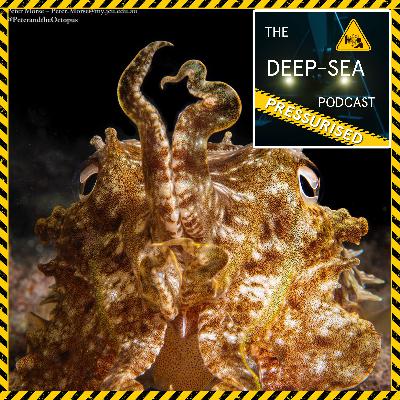
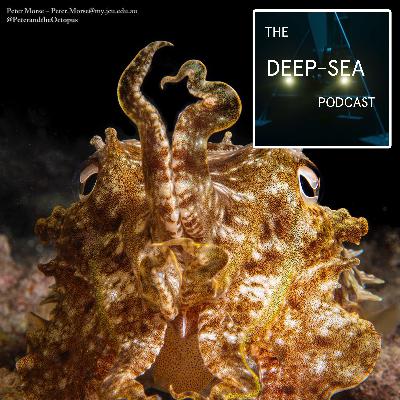
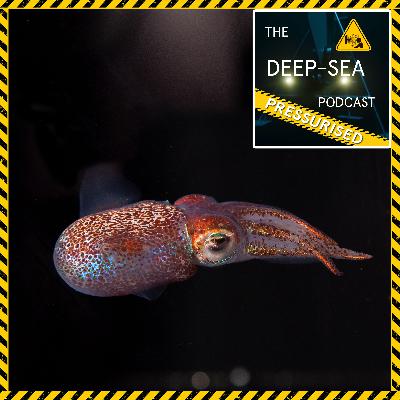
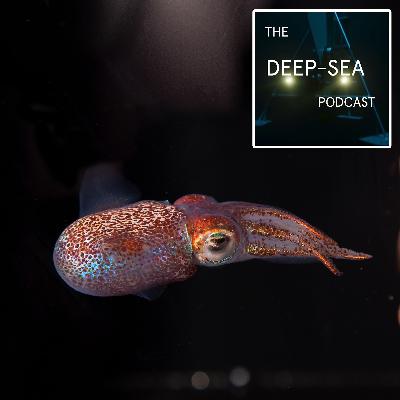


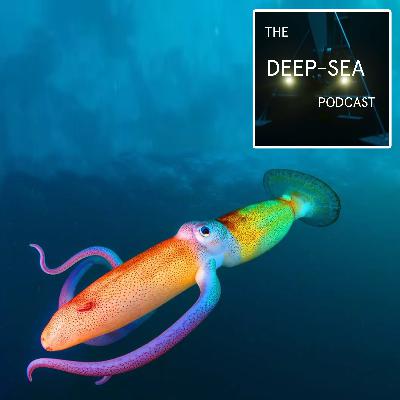
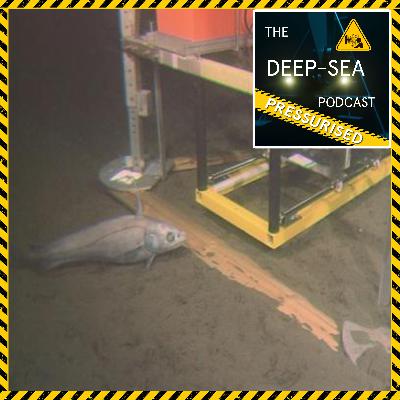
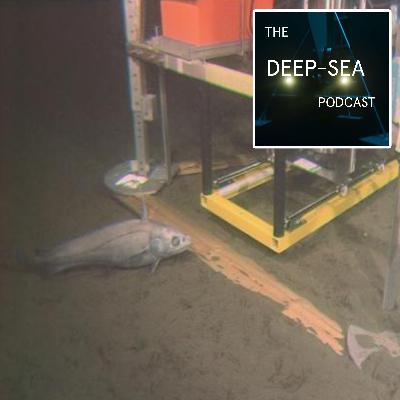
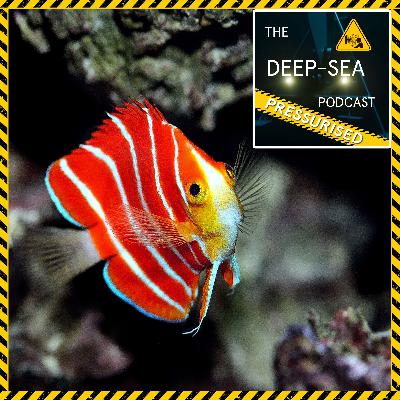
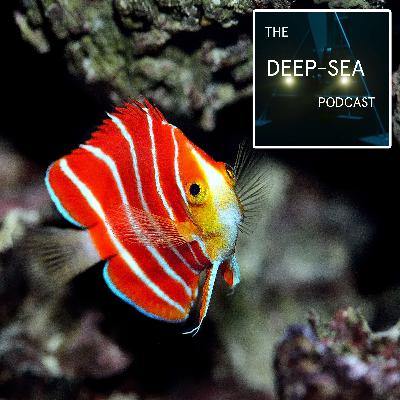
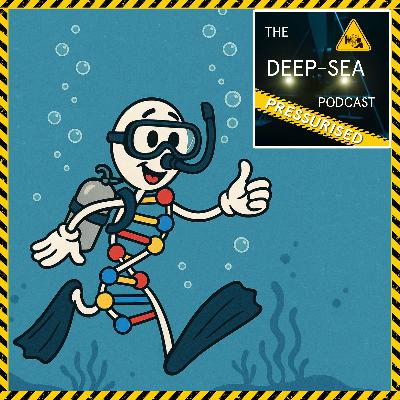
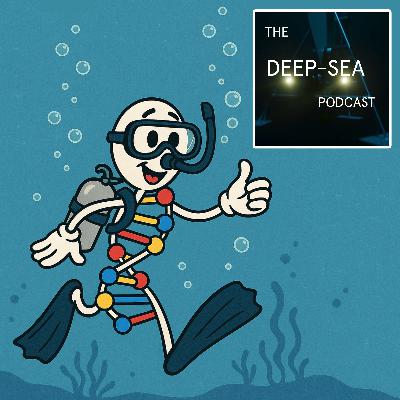
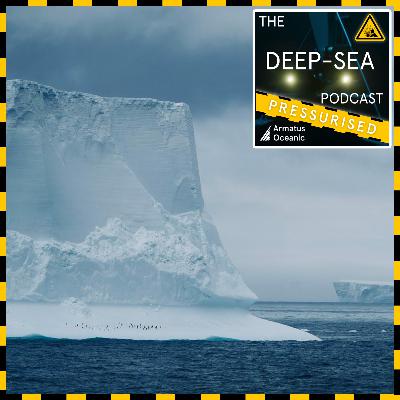
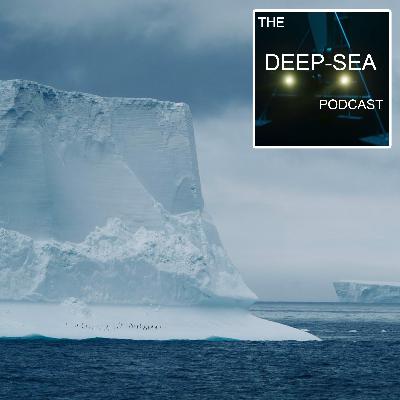
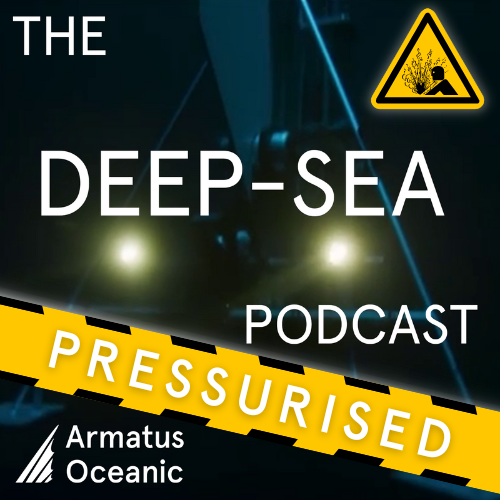
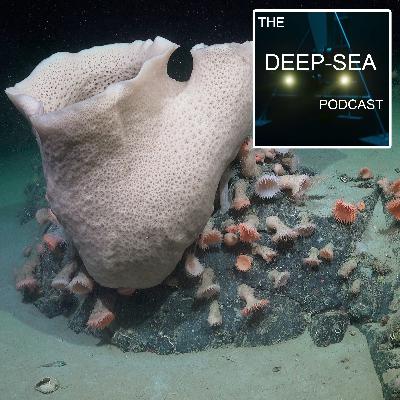




I love this podcast.
can't wait for more episodes-!!